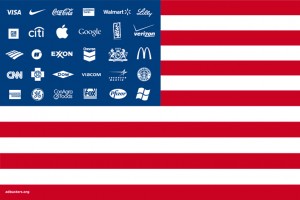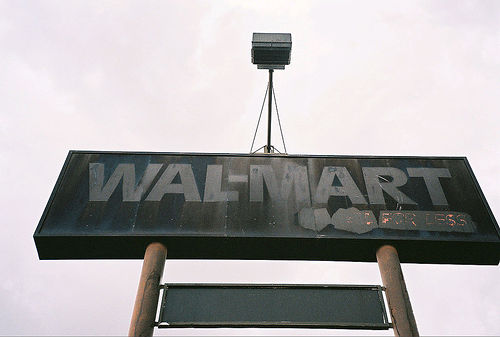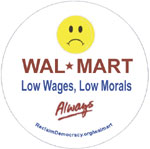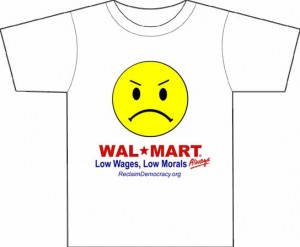 Instead of spending time with their families on Thanksgiving this year, employees for Walmart, Target and other chains get to give thanks by selling consumerism to people who think they’re getting great deals (often they aren’t–more below). Yes, more big box chains now are opening their doors for “Black Friday” sales on Thursday, Thanksgiving Day, which means employees of retail chains now must work on one of the only three days they traditionally haven’t had to work. Employees who don’t want to join risk drifting into part-timer purgatory or worse.
Instead of spending time with their families on Thanksgiving this year, employees for Walmart, Target and other chains get to give thanks by selling consumerism to people who think they’re getting great deals (often they aren’t–more below). Yes, more big box chains now are opening their doors for “Black Friday” sales on Thursday, Thanksgiving Day, which means employees of retail chains now must work on one of the only three days they traditionally haven’t had to work. Employees who don’t want to join risk drifting into part-timer purgatory or worse.
The corporate media and chain marketing campaigns again are doing their best to whip up a frenzy over supposedly great deals while encouraging people to sacrifice family time. But before rushing through dessert to ditch grandma and the kids, consider research commissioned recently by the Wall Street Journal. The headline with which it reported the results tells the story succinctly: The Myth of the Black Friday Deal (applies equally to Black Thursday). As you may surmise, you’re just as likely to save money on most items at other times in the year.
Of course, the corporate push to replace a day traditionally dedicated to family with consumerism is predictable, but here’s one ray of hope: chain employees and disgusted citizens are starting to fight back, a group of Walmart employees is planning to strike – almost unheard of in the U.S – and Target employees are protesting.
If you’d like to help defeat the latest corporate encroachment, consider these actions:
- Enjoy friends and family on Black Thursday/Friday and shop without the frenzy;
- Choose locally-owned independent businesses for your purchases when you do holiday shopping;
- Consider these ideas for Great Gifts Don’t Have to Be “Stuff,” almost all of which bypass the corporate production chain;
- Encourage friends and loved ones to make similar choices by planning other activities for Thursday and Friday.
But if you happen to participate in this madness, pause for a moment when handing over your cash and look for a moment at one of those bills. Just take a glance at George Washington’s face, or Honest Abe’s. What do you suppose those guys would think of our collective madness? We’re lucky dollar bills can’t cry.
Photo courtesy David Blackwell






